Louis Bigo
LaBRI, SCRIME
Evaluating Interval-based Tokenization for Pitch Representation in Symbolic Music Analysis
Jan 08, 2025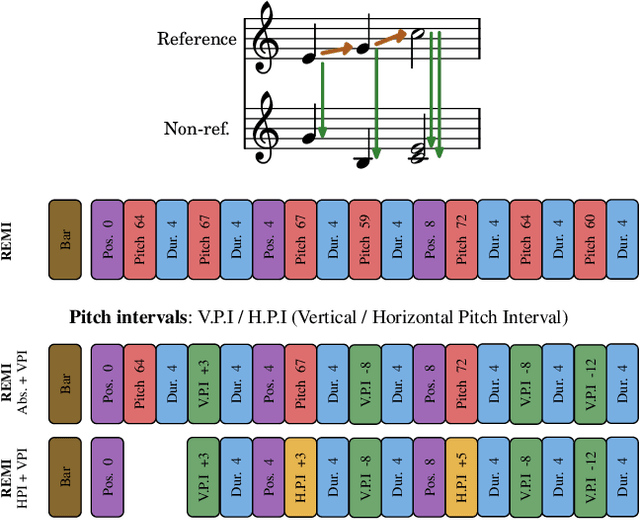
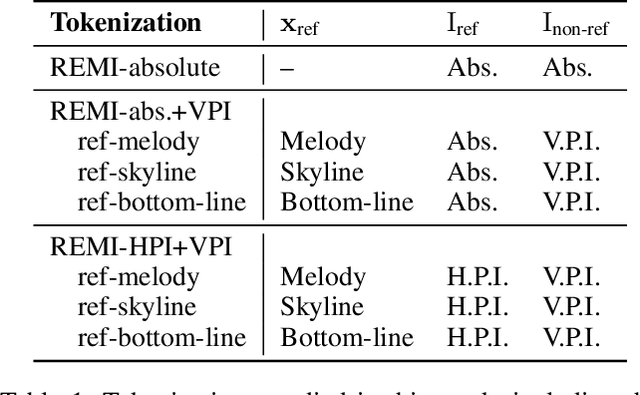
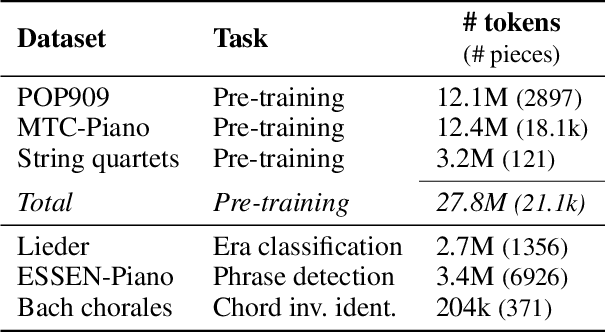
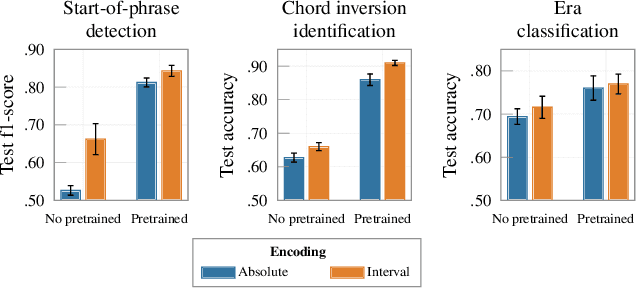
Abstract:Symbolic music analysis tasks are often performed by models originally developed for Natural Language Processing, such as Transformers. Such models require the input data to be represented as sequences, which is achieved through a process of tokenization. Tokenization strategies for symbolic music often rely on absolute MIDI values to represent pitch information. However, music research largely promotes the benefit of higher-level representations such as melodic contour and harmonic relations for which pitch intervals turn out to be more expressive than absolute pitches. In this work, we introduce a general framework for building interval-based tokenizations. By evaluating these tokenizations on three music analysis tasks, we show that such interval-based tokenizations improve model performances and facilitate their explainability.
Analyzing Byte-Pair Encoding on Monophonic and Polyphonic Symbolic Music: A Focus on Musical Phrase Segmentation
Oct 02, 2024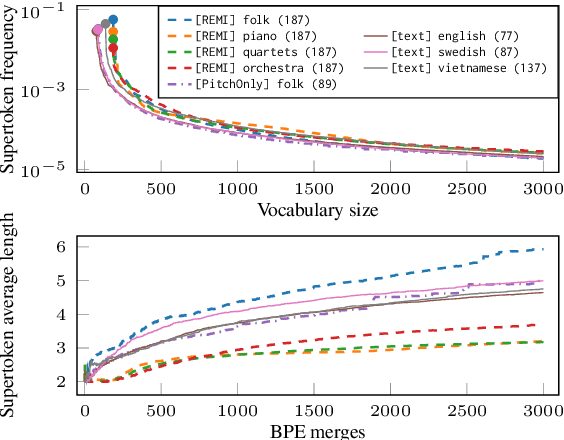
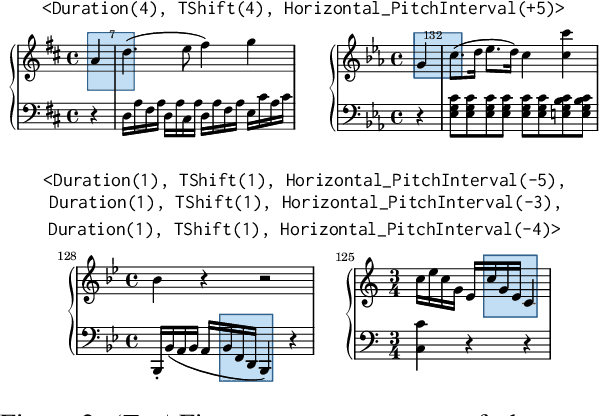
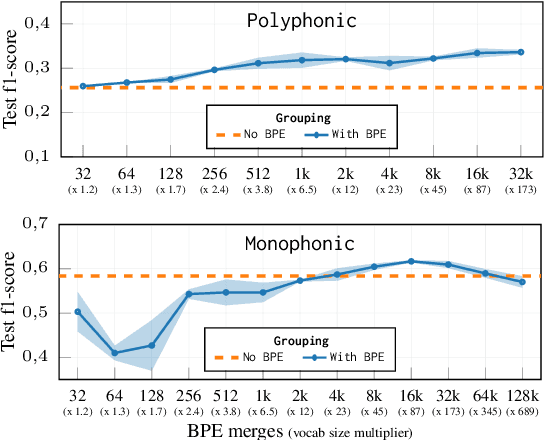
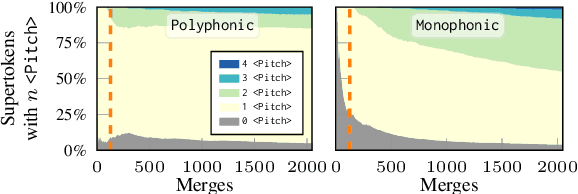
Abstract:Byte-Pair Encoding (BPE) is an algorithm commonly used in Natural Language Processing to build a vocabulary of subwords, which has been recently applied to symbolic music. Given that symbolic music can differ significantly from text, particularly with polyphony, we investigate how BPE behaves with different types of musical content. This study provides a qualitative analysis of BPE's behavior across various instrumentations and evaluates its impact on a musical phrase segmentation task for both monophonic and polyphonic music. Our findings show that the BPE training process is highly dependent on the instrumentation and that BPE "supertokens" succeed in capturing abstract musical content. In a musical phrase segmentation task, BPE notably improves performance in a polyphonic setting, but enhances performance in monophonic tunes only within a specific range of BPE merges.
Guitar Chord Diagram Suggestion for Western Popular Music
Jul 15, 2024Abstract:Chord diagrams are used by guitar players to show where and how to play a chord on the fretboard. They are useful to beginners learning chords or for sharing the hand positions required to play a song.However, the diagrams presented on guitar learning toolsare usually selected from an existing databaseand rarely represent the actual positions used by performers.In this paper, we propose a tool which suggests a chord diagram for achord label,taking into account the diagram of the previous chord.Based on statistical analysis of the DadaGP and mySongBook datasets, we show that some chord diagrams are over-represented in western popular musicand that some chords can be played in more than 20 different ways.We argue that taking context into account can improve the variety and the quality of chord diagram suggestion, and compare this approach with a model taking only the current chord label into account.We show that adding previous context improves the F1-score on this task by up to 27% and reduces the propensity of the model to suggest standard open chords.We also define the notion of texture in the context of chord diagrams andshow through a variety of metrics that our model improves textureconsistencywith the previous diagram.
Natural Language Processing Methods for Symbolic Music Generation and Information Retrieval: a Survey
Feb 27, 2024Abstract:Several adaptations of Transformers models have been developed in various domains since its breakthrough in Natural Language Processing (NLP). This trend has spread into the field of Music Information Retrieval (MIR), including studies processing music data. However, the practice of leveraging NLP tools for symbolic music data is not novel in MIR. Music has been frequently compared to language, as they share several similarities, including sequential representations of text and music. These analogies are also reflected through similar tasks in MIR and NLP. This survey reviews NLP methods applied to symbolic music generation and information retrieval studies following two axes. We first propose an overview of representations of symbolic music adapted from natural language sequential representations. Such representations are designed by considering the specificities of symbolic music. These representations are then processed by models. Such models, possibly originally developed for text and adapted for symbolic music, are trained on various tasks. We describe these models, in particular deep learning models, through different prisms, highlighting music-specialized mechanisms. We finally present a discussion surrounding the effective use of NLP tools for symbolic music data. This includes technical issues regarding NLP methods and fundamental differences between text and music, which may open several doors for further research into more effectively adapting NLP tools to symbolic MIR.
Modeling Bends in Popular Music Guitar Tablatures
Aug 22, 2023Abstract:Tablature notation is widely used in popular music to transcribe and share guitar musical content. As a complement to standard score notation, tablatures transcribe performance gesture information including finger positions and a variety of guitar-specific playing techniques such as slides, hammer-on/pull-off or bends.This paper focuses on bends, which enable to progressively shift the pitch of a note, therefore circumventing physical limitations of the discrete fretted fingerboard. In this paper, we propose a set of 25 high-level features, computed for each note of the tablature, to study how bend occurrences can be predicted from their past and future short-term context. Experiments are performed on a corpus of 932 lead guitar tablatures of popular music and show that a decision tree successfully predicts bend occurrences with an F1 score of 0.71 anda limited amount of false positive predictions, demonstrating promising applications to assist the arrangement of non-guitar music into guitar tablatures.
 Add to Chrome
Add to Chrome Add to Firefox
Add to Firefox Add to Edge
Add to Edge